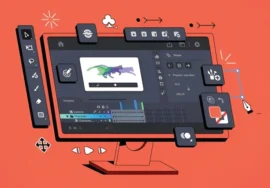
3D design has become an indispensable tool in the architecture industry, transforming how architects conceptualize, design, and present their projects. By providing a visual and immersive experience, 3D design enables architects to communicate their ideas more effectively, collaborate seamlessly with clients and construction teams, and ultimately create more innovative and sustainable buildings.
The Benefits of 3D Design in Architecture
- Enhanced Visualization and Communication
One of the primary benefits of 3D design is its ability to create highly realistic and detailed visualizations of architectural projects. By rendering 3D models from various angles and perspectives, architects can communicate their design intent more effectively to clients, stakeholders, and construction teams. This visual clarity helps to decrease misunderstandings and ensures that everyone involved in the project shares a common vision.
- Improved Design Exploration and Iteration
3D design software empowers architects to experiment with different design ideas and quickly iterate on their concepts. By creating virtual models, architects can test various design options, analyze their impact on factors such as space use, natural light, and airflow, and make informed decisions. This iterative design process leads to more innovative and optimized solutions.
- Facilitated Collaboration and Teamwork
3D design platforms ease seamless collaboration among architects, engineers, and construction professionals. By working on a shared 3D model, team members can review and comment on design changes in real-time, find potential conflicts early on, and make sure that the project is delivered on time and within budget.
- Enhanced Client Engagement
3D design tools enable architects to create immersive virtual walk-throughs and fly-throughs of their projects, allowing clients to experience the design as if they were physically present. This level of engagement helps clients to visualize the outcome, make informed decisions, and feel more invested in the project.
- Improved Construction Planning and Management
3D models can be used to generate detailed construction drawings, shop drawings, and fabrication plans, streamlining the construction process. By visualizing the building’s components in 3D, contractors can find potential challenges and develop efficient construction strategies. Additionally, 3D models can be used to simulate construction sequences and analyze constructability issues, minimizing costly mistakes and delays.
- Sustainable Design and Building Performance Analysis
3D design software incorporates advanced simulation tools that allow architects to analyze the energy performance, day lighting, and acoustic properties of buildings. By understanding how a building will do in real-world conditions, architects can make informed design decisions to optimize energy efficiency, reduce environmental impact, and enhance occupant comfort.
Common 3D Design Software Used in Architecture
Several powerful 3D design software tools are widely used in the architecture industry:
- Autodesk Revit: A comprehensive Building Information Modeling (BIM) software that enables architects to create detailed 3D models and generate correct 2D drawings.
- SketchUp: A user-friendly 3D modeling software that is ideal for creating quick concept designs and visualizations.
- Rhino 3D: A powerful and versatile 3D modeling software that is commonly used for complex architectural forms and parametric design.
- Archd: A BIM software that focuses on architectural design and provides a range of tools for creating detailed 3D models and generating construction documents.
The Future of 3D Design in Architecture
As technology continues to advance, the role of 3D design in architecture is poised to grow even further. Emerging technologies such as virtual reality (VR) and augmented reality (AR) are transforming the way architects interact with their designs and present them to clients. By immersing clients in virtual environments, architects can create more engaging and impactful experiences.
In addition, the integration of artificial intelligence (AI) and machine learning into 3D design software is opening up new possibilities for automated design generation, optimization, and analysis. AI-powered tools can analyze vast amounts of data to identify patterns and trends, helping architects make more informed decisions and create more innovative designs.
Real-world Applications of 3D Design in Architecture
3D design has already made a significant impact on various aspects of the architectural industry:
- Urban Planning: 3D modeling is used to simulate urban development, analyze traffic flow, and assess the impact of new infrastructure projects.
- Interior Design: 3D design tools help interior designers visualize space planning, material selection, and lighting design.
- Heritage Preservation: 3D scanning and modeling techniques are used to document and preserve historical buildings and artifacts.
- Construction Management: 3D models are used to create detailed construction plans, schedule work, and track progress.
- Facility Management: 3D models can be used to manage building operations, maintenance, and energy consumption.
Overcoming Challenges in 3D Design
While 3D design offers numerous benefits, it also presents some challenges:
- Complexity: Creating complex 3D models requires specialized skills and knowledge.
- Computational Power: High-quality 3D rendering and simulation demand significant computational resources.
- Data Management: Managing large 3D models and associated data can be challenging.
- Interoperability: Ensuring seamless data exchange between different software tools can be difficult.
To address these challenges, architects need to stay updated on the latest 3D design technologies, invest in powerful hardware, and adopt efficient workflows. Additionally, collaborative platforms and standardized file formats can help to improve interoperability and data management.
Conclusion
3D design has revolutionized the architecture industry by providing powerful tools for visualization, collaboration, and analysis. As technology continues to evolve, we can expect to see even more innovative and groundbreaking applications of 3D design in the years to come. By embracing this technology, architects can create more sustainable, efficient, and aesthetically pleasing buildings that enhance the quality of life for generations to come.





